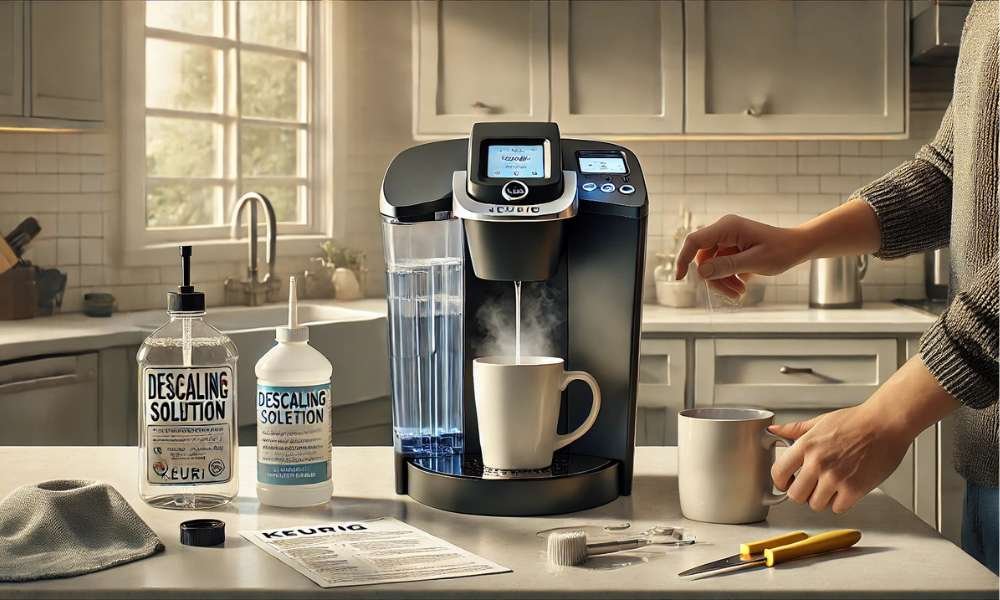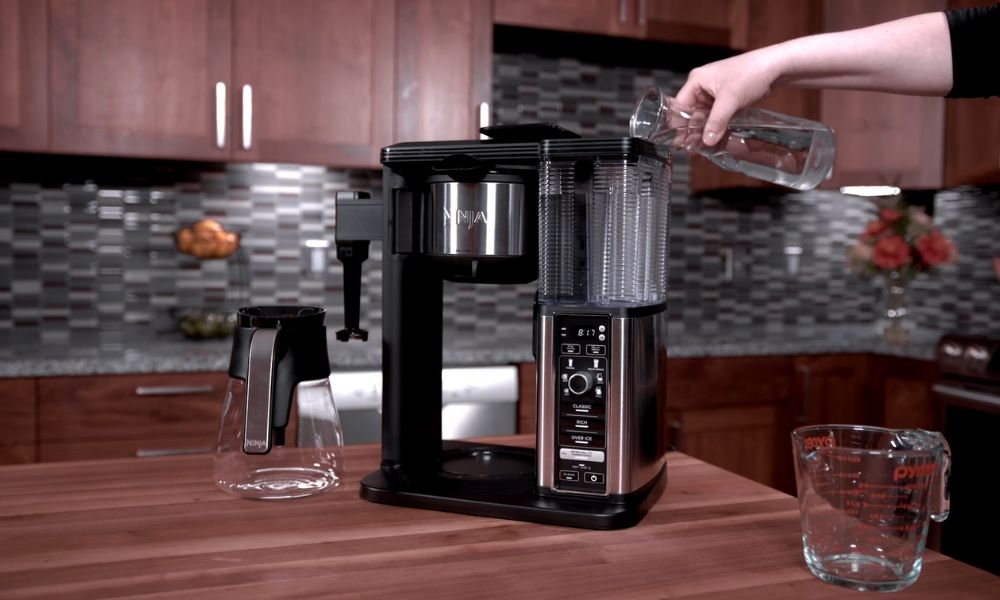Descaling your Keurig coffee maker is critical to keeping its performance and making sure each cup of espresso tastes clean.Over time, mineral deposits from water can build up inside your machine, leading to clogs and a slower brewing process. Knowing how to descale a Keurig coffee maker Can help save you those issues and make the lifespan of your device. In this guide, we’re going to walk you through the step-with the aid-of-step system of descaling your Keurig. Whether you’re a seasoned coffee lover or new to Keurig, this simple routine will keep your coffee maker in top condition for years.
Understanding The Importance Of Descaling Your Keurig Coffee Maker
Descaling isn’t just an optional add-on—it’s a fundamental part of your Keurig’s health and longevity. Each time you run water through your machine, minerals like calcium and magnesium deposit on the inner parts. Over time, these minerals accumulate, narrowing the flow of water, extending brew time, and leading to inconsistent temperatures. Eventually, you might notice the coffee’s taste changing, hinting at a machine in distress. By regularly descaling, you flush out these deposits, clearing the way for hot water to flow, unimpeded, through the coffee grounds. This not only keeps your coffee tasting fresh but also protects your Keurig’s internal components from unnecessary strain, thus extending its lifespan.
What You’ll Need To Descale A Keurig Coffee Maker
Getting ready to descale? Great choice. You don’t need a chemistry set to get started—just a few simple items. You have two primary options for the descaling agent: a commercial solution, which is specifically formulated for coffee makers, or white vinegar, which is both effective and wallet-friendly. Either will work, so pick your preference. Also, don’t forget to grab a cloth for that final touch—once descaling is done, you’ll want to polish the machine so it’s pristine, inside and out.
Essential Items For The Descaling Process
– Descaling Solution or White Vinegar: Both work wonders. The descaling solution is tailored for Keurigs, but vinegar is a strong and budget-friendly alternative.
– Water: You’ll need plenty of fresh water to rinse out the descaling agent after cleaning.
– Cloth: A soft cloth will make short work of any smudges or drips, leaving your Keurig shining.
Getting Ready To Descale Your Keurig
Preparation is everything. Start by unplugging the machine for safety, then empty the water reservoir, so you have a blank canvas. Discard any K-Cups left in the holder, too. An empty Keurig is a ready Keurig. Taking these small steps makes the descaling process smoother, ensuring every bit of solution runs through the right channels.
Emptying The Water Reservoir And K-Cup Holder
Clear out the reservoir completely. If you have leftover water, pour it out. The K-Cup holder should be empty as well, which allows the descaling solution or vinegar to flow freely, tackling every inch of mineral buildup within the system.
Step-By-Step Guide To Descale A Keurig Coffee Maker
1. Adding the Descaling Solution or Vinegar
– Fill the reservoir with your chosen descaling agent—either a commercial solution or a 50/50 mix of vinegar and water. Aim for halfway full for the best results.
2. Running the First Cycle
– Plug your Keurig back in, place a large bowl or mug beneath the spout, and run a brew cycle. No coffee pod needed! Let the solution pour through. Repeat this until the reservoir is empty, allowing the solution to coat all internal surfaces.
3. Letting It Sit
– Pause. Leave the machine alone for 30 minutes. This allows the descaling agent to really work its magic, breaking down mineral buildup from the inside out. It’s a crucial step, so resist the urge to speed things up!
4. Rinsing and Flushing Out the Solution
– Now, it’s time to rinse time. Fill the reservoir with fresh water and run several brewing cycles. You’ll want to keep going until the water runs crystal clear. This is essential to remove any lingering solution, ensuring it doesn’t taint the flavor of future brews.
5. Wipe Down the Machine
– For the finishing touch, use a cloth to wipe down the outside. Pay attention to areas around the drip tray and K-Cup holder, where coffee residue might build up. This step leaves your Keurig looking just as good as it operates.
Maintaining Your Keurig Between Descaling Cycles
Regular descaling is necessary, but in between those sessions, a little upkeep goes a long way. Consider rinsing the water reservoir every week and, if possible, using filtered water to minimize mineral buildup. You can also run a plain water cycle once a week—no coffee pod—to help flush out minor deposits. These small habits will keep your coffee tasting fresh and reduce the need for frequent descaling.
FAQ
– What If I Don’t Have a Descaling Solution?
– White vinegar is an excellent alternative, widely used and highly effective. Just remember, it’s potent, so you’ll need to run a few extra rinsing cycles to eliminate any leftover vinegar taste.
Conclusion
Descaling your Keurig coffee maker is essential to maintain its performance and longevity. By removing mineral buildup, you ensure that your coffee tastes fresh and your machine runs smoothly. To descale, follow simple steps like filling the water reservoir with a descaling solution, running several brew cycles, and then rinsing thoroughly. Regular descaling every three to six months keeps your coffee maker in top shape and extends its lifespan. So, take the time to descale your Keurig coffee maker, and you’ll continue to enjoy the perfect cup of coffee, free of any bitter flavors or machine malfunctions.



